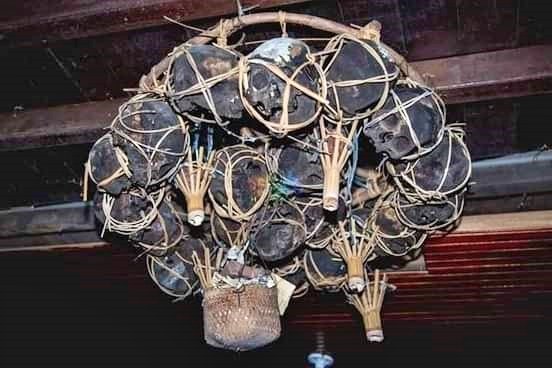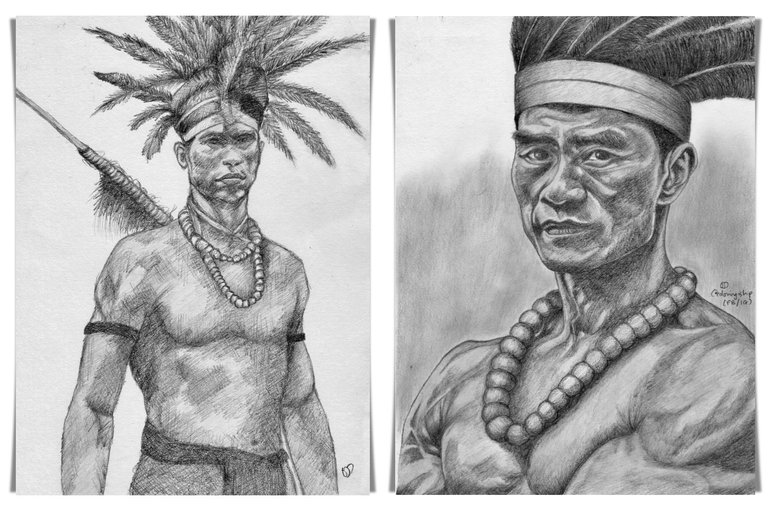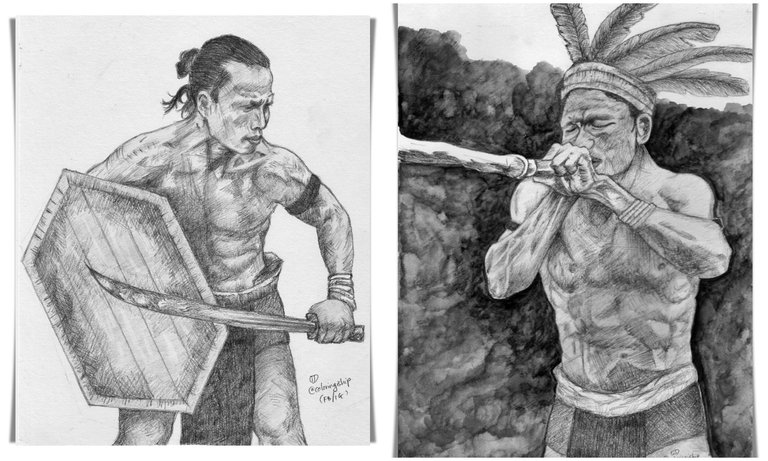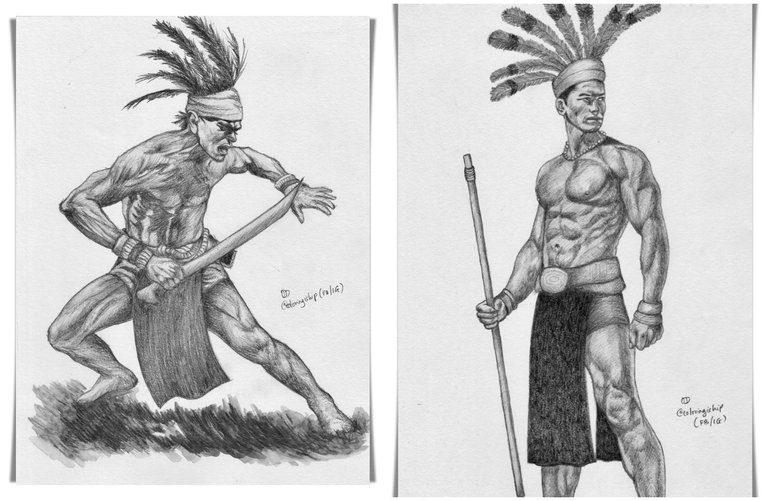One of my recent posts delved into the mythological figure of Sengalang Burong from Dayak Iban lore, which spurred my interest in sharing more about my people's culture with the HIVE community. The Dayak Iban culture, while rich and vibrant, remains largely obscure outside of Sarawak, Malaysia my home state, and Kalimantan in Indonesia. Regrettably, even within Malaysia, particularly in Peninsular Malaysia, our culture is not well understood. There, misconceptions abound, with some individuals still imagining us living in trees, donning loincloths, and leading primitive lives - misrepresentations that couldn't be further from the truth. It's disheartening to witness such ignorant and demeaning remarks from fellow Malaysians. There have been moments when I've been tempted to retaliate with insults, but I've chosen not to stoop to that level.
Instead of harboring anger and bitterness, I've decided to play an active role in educating others by showcasing my people's culture in some of my upcoming posts.
Over the last few weeks, I've been working on a series of drawings that depict Dayak Iban warriors from the past. I realized there's a scarcity of artwork featuring our warriors, which inspired me to create my own. However, as an artist, I embrace the freedom to exercise artistic license. As such, my drawings are not intended to be exact visual representations of Dayak Iban warriors (omitting tattoos, the traditional bowl haircut with long hair, etc.) and should be appreciated for their artistic value alone. I plan to incorporate these drawings into my future posts about Dayak Iban culture.
💀 Borneo Headhunters - The Practice of Headhunting By the Dayak Iban 💀
The Dayak Iban, historically renowned for their headhunting practices, have long since abandoned this tradition. The practice was officially outlawed by the White Rajahs' dynasty in the late 19th century. Remarkably, headhunting was temporarily "legalized" by the British/Allied forces during the Malayan Emergency (1948-1960) to combat Communist insurgents. To the best of my knowledge, this was the last instance when headhunting was permitted. In contemporary times, headhunting is a relic of the past, often evoking nostalgia for the valorous days of our ancestors. With the widespread conversion of the Dayak Ibans to Christianity, the tradition of keeping skull relics ceased, and these relics were respectfully interred. I recall, as a child, seeing these skulls displayed on the rafters of our old longhouse. However, following our conversion to Christianity, they were ceremoniously buried by my forebears.
I don't have personal photographs of these relic skulls, yet they remain a familiar sight in some rural longhouses across Sarawak. As a child, I would play beneath these skulls as if they were mere pieces of household decor 💀. However, as an adult, the thought of it sends shivers down my spine 😫.

💀 Why Did the Dayak Iban Practice Headhunting? 💀
I admit I don't know all the details but I did some readings and I can summarize it into six main reasons:
To end the mourning period or "ngetas ulit"
The Dayak Iban have a strict protocol for mourning and burying their dead, which includes a ritual involving the acquisition of the enemy's severed head to conclude the mourning period. While this practice may seem cruel and barbaric, who are we to pass judgment on their deeply held beliefs?Symbols of power and status
The number of heads one had acquired symbolized their power and social status within the community. Titles such as "tuai serang" (warleader) or "raja berani" (king of the brave) were bestowed based on these achievements, reflecting the individual's bravery and leadership.

Agricultural prosperity and supernatural strength
Before the paddy harvesting seasons, Dayak Ibans engaged in headhunting to secure fresh heads. These were believed to enhance soil fertility, leading to a head festival "enchabuh arong" in honor of these new trophies. The Dayak Ibans held a belief that supernatural strength resided in the soul and head of humans, with fresh heads imbuing magical powers for communal protection, ensuring bountiful harvests, and aiding in disease curing and prevention.Social justice and marital practices
Headhunting also served as a means of exacting revenge for murders, adhering to the "blood credit" principle, unless resolved by "adat pati nyawa," a form of customary compensation. Moreover, fresh heads played a critical role in matrimonial transactions, such as the "derian palit mata" (eye-blocking dowry), showcasing the suitor's valor and his ability to protect his future family and land.

- Construction and community protection
In the construction of new buildings or bridges, the inclusion of human heads was believed to confer additional strength and significance. This practice underscored the community's reliance on the spiritual protection these heads provided, adhering to a strategy of preemptive defense against potential threats. As a child, I recall hearing rumors of people being kidnapped and later found with their heads missing. It was widely believed that these missing heads were buried at the foundation of newly constructed buildings. However, there was no concrete evidence to support these rumors, and they may have simply been urban legends. - Territorial expansion
Headhunting expeditions were not solely acts of warfare or spiritual necessity; they also facilitated territorial expansion and migration. Brave Dayak Iban groups, such as those led by figures like Mujah "Buah Raya," embarked on migrations to new areas, establishing dominance and settling new lands through the prowess demonstrated in headhunting. This practice enabled the Dayak Ibans to settle in vast territories, from the migrations within Sarawak to the broader movements across regions in Kapuas, Kalimantan, Indonesia.

The tradition of headhunting, while no longer practiced today, remains an important aspect of the heritage of my people. It reflects the complexities of our social structure, belief systems, and the harsh realities of our historical environment in the past.
I hope I have covered some important facts about the practice of headhunting among the Dayak Iban. I plan to explore other aspects of my culture in upcoming posts, including the story of one of my forefathers, the renowned war leader Orang Kaya Pemancha Dana "Bayang" of Padeh, Saribas. Stay tuned!
That's it for now. If you read this far, thank you. I appreciate it so much! Kindly give me a follow if you like my content. I mostly write about making art, life musing, and our mundane yet charming family life here in Klang Valley, Malaysia.
Note: All images used belong to me unless stated otherwise.


